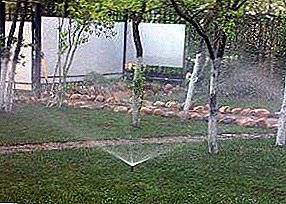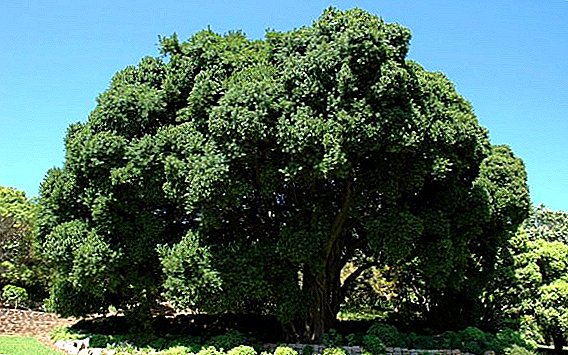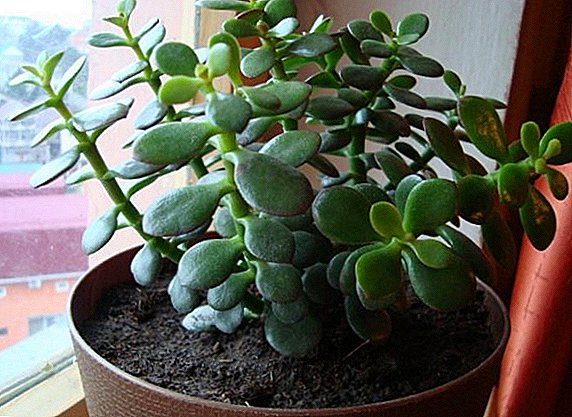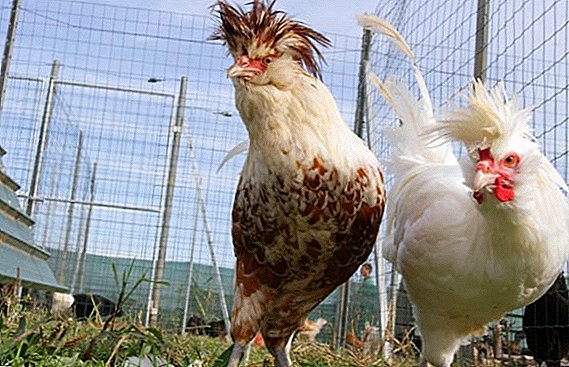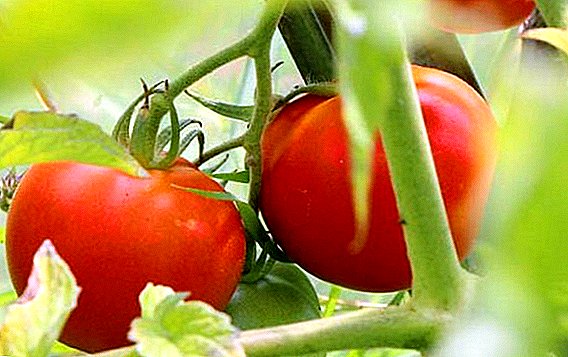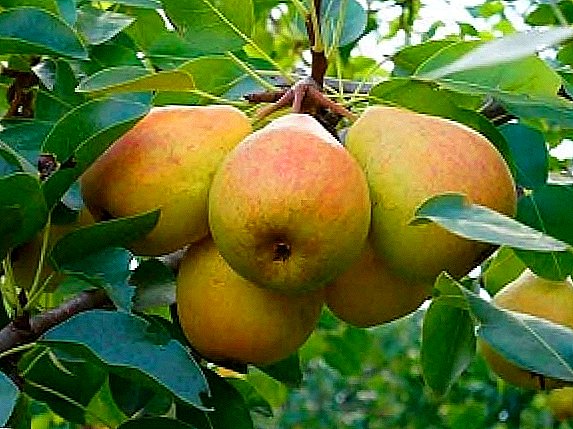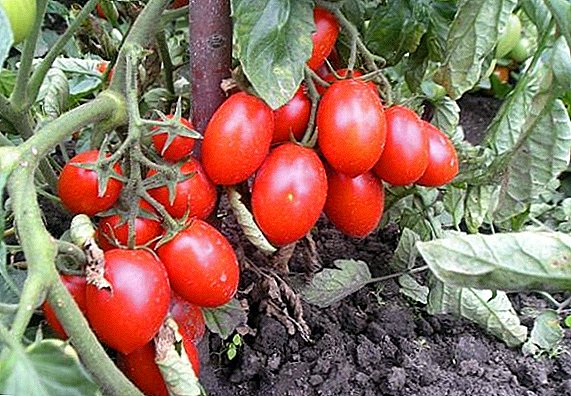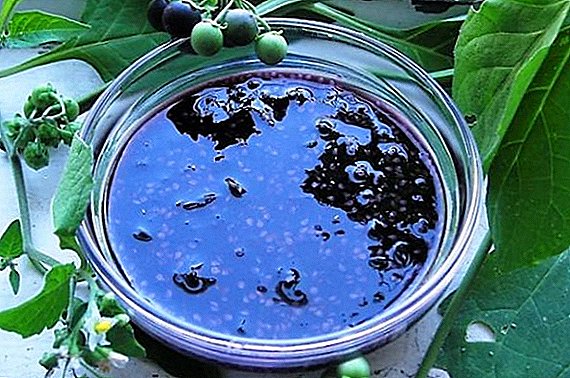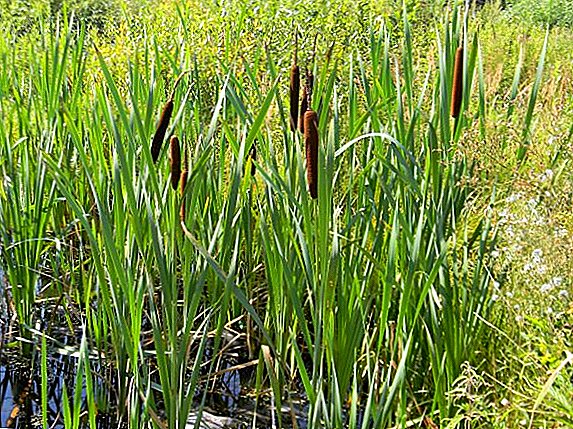 Rogoz is widely used - it is used in folk art, cooking, medicine and even in construction. In this article we will look at where the cattail grows (or bulrush), what kind of plant it is and what benefits it can bring.
Rogoz is widely used - it is used in folk art, cooking, medicine and even in construction. In this article we will look at where the cattail grows (or bulrush), what kind of plant it is and what benefits it can bring.
Description and types
It can reach about 2 m in height. It has succulent, thick, cylindrical stems. The rhizome is wide and immersed in water to a depth of one meter. Due to its root system forms in the pond very wide thickets. The inflorescences or cobs can be as wide as 3 cm. They have a dark, brown color, which distinguishes cattails from ordinary reeds, which are found on any body of water and have brown cobs. Rogoza inflorescences retain their shape until spring, then they become soft and “fly away” for a long distance. The leaves of this plant are very stiff to the touch, resemble the straps externally, and their width is about 2 cm.
Did you know? The stalk of cattail can be eaten raw, because it contains a lot of sugar and it has a pleasant taste.
 There are more than 30 species of this plant, but the most common we have are the cattail broadleaf, with the description of which we have already met, Laxman, small, graceful.
There are more than 30 species of this plant, but the most common we have are the cattail broadleaf, with the description of which we have already met, Laxman, small, graceful.Laxman it does not exceed 1.3 m in height, has thin leaves about 0.5 cm wide, the cobs are oblong and grow below the leaves. 
Small - The height is about 50 cm, rarely reaches 1 m. The ears are small, the leaves are less than 0.3 cm thick. 
Graceful - It is very similar to the cattail Laxman, but most often, you can meet him on the ponds in the parks, as it is used for decorative purposes. 
Where is growing?
Bulrush - It is a coastal plant that can be found in Ukraine, Russia, Belarus, in the Baltic countries and Kazakhstan. It grows most often in reservoirs with stagnant water, as a rule, these are small lakes, but it can also be found in river bays. Sometimes it is possible to find broad-leaved cattail in park ponds, but the main thing is not to confuse it with ordinary reeds.
Did you know? In the villages until the middle of the 20th century, reed was used to seal the foundation for building houses.
Medical applications
Reed based medicines have many properties, they help stop fever, bleeding, have anti-inflammatory effects and much more. 
In traditional medicine for the preparation of drugs using all parts of the plant. And then we look at several ways of using cattail:
- For the treatment of burns and cuts using an ointment, which is prepared from 100 g of ghee and fluff one or two cobs.
For the treatment and prevention of the gastrointestinal tract, such plants are also used: calendula, bathing suit, sage (salvia), meadow grass, linden, chervil, double bed, watercress, yucca, dodder, Kalina buldenezh, goldenrod, onion slizun, peanut, oregano (oregano) and kale cabbage.
- Decoction of the leaves can be used to treat various diseases of the stomach and intestines, as well as lotions with decoction accelerate wound healing.
- To prepare a diuretic, you need to take 3 tablespoons of milled leaves and stems, pour into a glass jar, and then pour them with a liter of boiling water, let it brew for at least an hour. Take this infusion should be 200 ml from 3 to 4 times per day. This tool improves kidney function and reduces swelling of the body.
- Often this plant is used to treat diabetes. To do this, you need a spoonful of milled rogoza to fill in 0.5 liters of boiling water, and then boil for a few minutes more, then the cooled broth is filtered. This means take 1/3 cup three times a day. Also, this medicine can be used as a prophylactic agent.
Important! The course of treatment depends on the level of sugar. After the level goes down, you can take half a cup of tea once a day.

- A decoction of the roots of cattail is taken to treat colitis. To prepare such a decoction, you need: pour a spoonful of chopped root with 250 ml of boiling water and boil for about 10 minutes, then cool. It is necessary to take such medicine one spoon before a meal 5 times a day until recovery.
- Inflorescences of reeds are used to get rid of heart shortness of breath. In the period from August to the end of September, when the reed is actively blooming, you need to collect its cobs and brew them as usual tea. You need to take this medicine 6 sips every 3 hours for several weeks in a row.
- To get rid of pain and discomfort in your heart, you need to brew 2 ears in a liter of water, then add a few mint leaves and leave for a couple of hours. Take this broth should be regularly several times a day until the complete disappearance of all unpleasant sensations in the heart.
Chervil, hellebore, hawthorn (glod), loch, rocambol, cantaloupe, apricot, calendula, buttercups, oxalis, physalis, squash, iceberg lettuce, guava and cumin, as well as rogoz, have a positive effect on the cardiovascular system.
- To strengthen the immune system, it is recommended to take the broth prepared as follows: finely chop the kilogram of washed and cleaned roots, pour into a saucepan with 2 liters of boiling water and cook for about an hour. After the water must be poured into a separate vessel, and the rhizome again pour boiling water and boil for 30 minutes. The resulting broth should be mixed, close the lid and cook for 10 to 15 minutes. The broth is taken up to take 200-250 ml per day.

Important! Treatment with rogoz is suitable only for adults.
Contraindications
This plant has almost no contraindications for use. Do not take drugs for people who suffer from hepatosis, gout and varicose veins. Treatment is not recommended for pregnant and lactating women. Also, long-term use can cause constipation.
Kiln stock
June is the best period for harvesting leaves for long-term storage. Harvesting can be carried out throughout the summer, but at the beginning of summer the content of useful substances in the plant stems is highest. The collected leaves should be dried in a room with good ventilation on the windowsill or you can do this procedure outside in the shade, and you need to lay out the raw materials in a thin layer. 
Harvesting the roots do in September. Rhizome need to dig, wash and cut into pieces. The material must be dried in a dryer maintaining the temperature around 45 ° C.
Inflorescences are best collected when they bloom, this period falls on August, September. Cut off cobs should be dried either on the windowsill or on the street in the shade.
Important! All parts of the plant should be stored in paper bags in a room with a low level of moisture and good ventilation for no more than two years.Rogoz is a very useful plant, having minor contraindications. Drugs based on it can help in the treatment of many diseases, but always before using these drugs must get advice from your doctor.


